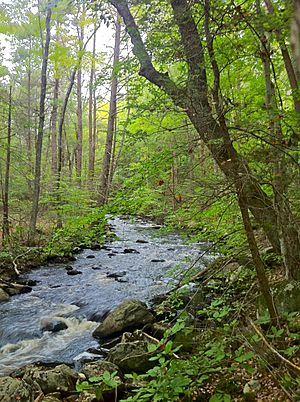Hammonasset people facts for kids

The Hammonasset people were a group of Native American people who lived in the Eastern Woodlands. Their traditional lands, often called "digging grounds," stretched from the west side of the Connecticut River all the way to the Hammonasset River in Connecticut.
The Hammonasset Way of Life
The Hammonasset people spoke a language from the Algonquian language family. In their society, families were organized into groups called clans. These clans were often named after animal totems, like a bear or a wolf. The name Hammonasset itself means "where we dig the ground." This name shows how important farming was to them.
They were skilled at fishing and hunting. They also grew important crops like corn, beans, and squash. The Hammonasset River was special because it was one of the few rivers where salmon swam upstream to lay their eggs. This provided a good source of food for the community.
Hammonasset History and Changes
The first European colonists arrived in the Hammonasset area in 1639. A year later, in 1640, a powerful leader named Uncas, who was the sachem (chief) of the Mohegan people, married Sebequanash. Sebequanash was a leader of the Hammonasset people, sometimes called "The Man Who Weeps." This marriage gave Uncas some influence over the Hammonasset lands.
Uncas then sold these lands to the New England colonists. Because of this, the Hammonasset people moved and became part of the Mohegan community.
Before this, the Hammonasset people were once a smaller group connected to the Quinnipiac people. They were known to live near a place now called Guilford, Connecticut.
Over time, the number of Hammonasset people changed. In 1730, there were about 250 to 300 people in their group. By 1774, their population had become much smaller, with only 38 people remaining. In 1768, they moved to Farmington, Connecticut, to live alongside the Tunxis people.

